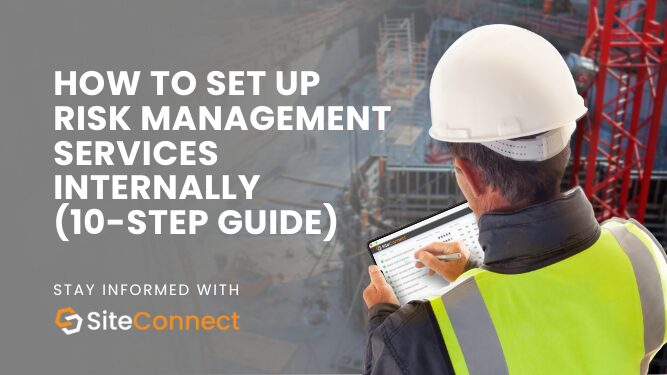Every organisation faces risks – from workplace safety and compliance issues to operational and reputational challenges. For your organisation, the challenge is not just knowing risks exist, but implementing effective risk management services internally to mitigate them.
While some businesses rely on external providers, this guide focuses on practical, in-house approaches to risk management – supported, where helpful, by digital tools to make your life easier.
Here’s a step-by-step guide to setting up risk management services internally.
1. Define Scope and Objectives
Clarify what your internal risk management services will cover. Are you targeting regulatory compliance, incident reduction, improved reporting visibility, or all of the above? Be explicit: define the sites, processes, and risk categories you’ll include. Consider mapping objectives to specific legal obligations (e.g., the Health and Safety at Work Act 2015 in NZ) to ensure your framework aligns with regulatory requirements.
2. Secure Leadership Commitment
Risk management is only effective with executive backing. Document leadership support formally – minutes, signed policies, or internal memos. This ensures accountability and resourcing, and demonstrates compliance readiness in case of audits. Leaders should actively endorse the framework, not just approve it.
3. Map and Identify Risks
Go beyond generic hazard lists. Analyse historical incidents, audits, near-misses, and contractor feedback. Use digital risk registers to centralise this information. Consider sector-specific risks (e.g., construction, manufacturing) and the consequences of non-compliance. Capturing near-misses helps identify hidden hazards before they escalate.
4. Assess and Prioritise
Implement a structured risk assessment matrix (likelihood vs. consequence). Assign numerical values to risks to prioritise interventions objectively. Focus on high-likelihood, high-consequence risks first – these are usually the areas regulators scrutinise most. Document your methodology clearly to demonstrate due diligence.
5. Build Your Risk Management Framework
Develop policies, procedures, and reporting channels tailored to your organisation. Reference standards like ISO 31000 and AS/NZS frameworks, but adapt them to your operational context. Include escalation pathways for critical risks to satisfy both internal compliance checks and external regulators.
6. Implement Practical Controls
Translate assessments into action. Controls can include safer work procedures, contractor pre-qualification, PPE audits, or engineering solutions. Integrate these measures into daily operations with checklists, automated reminders, and verification workflows – digital tools can reduce human error and ensure compliance is consistently maintained.
7. Engage and Train Staff
Even the best framework fails without competent staff. Use structured inductions, toolbox talks, and refresher programs. Incorporate digital tracking of training completion and reminders to ensure compliance documentation is audit-ready. Encourage staff to report hazards and near-misses digitally, improving visibility and accountability.
8. Monitor and Measure
Measure both leading indicators (inspections, audits, near-miss reports) and lagging indicators (incidents, injuries, compliance breaches). Dashboards can visualise trends over time, allowing safety teams to detect risk patterns proactively and adjust controls before incidents occur.
9. Manage and Close Actions
Assign corrective actions with clear ownership and deadlines. Track progress digitally to prevent tasks from falling through the cracks. Keep a record of all actions completed. This not only improves internal safety but also demonstrates compliance diligence to regulators.
10. Review and Improve
Schedule regular reviews of your risk register, incident reports, and performance data. Benchmark against industry standards and regulatory expectations. Solicit feedback from staff and contractors to identify gaps. Continuous improvement ensures your internal risk management services remain effective, audit-ready, and aligned with compliance obligations.
Implementing internal risk management services doesn’t have to be complicated. Start by defining clear objectives, engaging your team, and leveraging digital tools to streamline processes. For expert guidance and practical solutions to strengthen your safety framework, get in touch with our team today – we’ll be happy to help!


